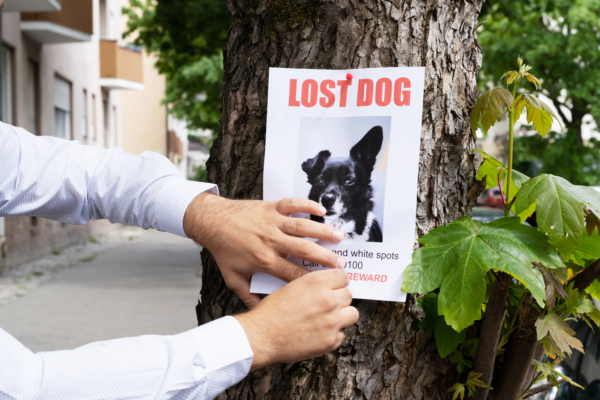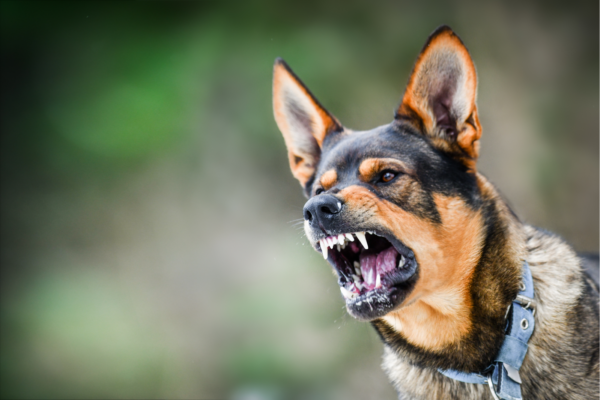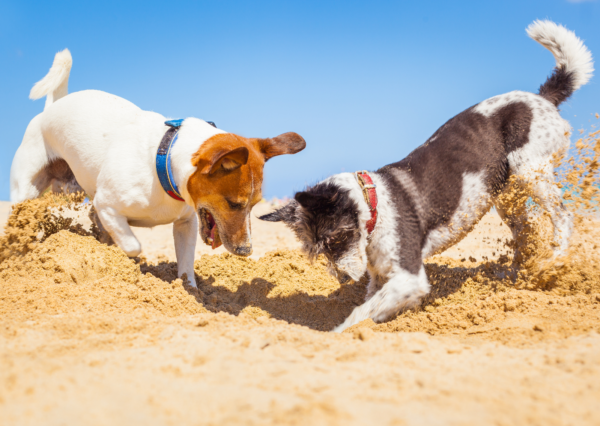How to Stop Your Dog From Pulling on Leash
Is your dog pulling on the leash every time you go for a walk? This can be incredibly frustrating and problematic for both ends of the leash. To begin to address this challenge you will want to identify what is motivating your dog to pull. Many dogs pull when on leash because they are excited to be out and about in the world, and they want to pull ahead to explore all the smells, and sights. This is perfectly natural, and with just a bit of planning, you can make walks more enjoyable for you and your dog.
Why is Your Dog Pulling On Leash?
The answer to this question will be different for different teams, but a few common reasons dogs pull on leash include:
- Four legs move faster than two! Most dogs naturally walk a little (or a lot!) faster than their humans.
- Some dogs may enjoy running, and view a leash walk as an opportunity to blow off some steam.
- Many dogs spend a lot of time indoors or in their yard, and when they get out in the world, there are many new smells and sights to experience.
- People often use short leashes that limit how far the dog can move away from the person before pulling occurs.
- Pulling is often reinforced by the dog accessing things of interest like sniffing, other dogs, people, etc.
What to do to Stop Leash Pulling
As you can see, many factors impact the complex skill of leash walking, but for now, let’s talk about your dog’s motivation for pulling. If you have a reasonable assumption about why your dog is pulling on leash, one way to prevent pulling might be to give your dog more access to the thing they want. For example, if you think your dog is pulling because they view your walks as an opportunity to explore the world, give them the opportunity to explore the world! If you are lucky enough to live somewhere your dog can safely run off leash, take them and let them explore the world until their heart’s content. If, like me, you have limited access to off leash opportunities, take your dog places they can explore on a long leash. Note, using a long leash safely does require the human and dog to have some skills on board. After you have spent a fair amount of time (the amount of time will vary by dog) letting your dog sniff, and explore the world, then try to practice some loose leash walking skills using treats to reinforce your dog for staying by your side. Since your dog has just spent a lot of time sniffing, and exploring, and taking in the world in the way they are interested in, it is likely they will be less motivated to explore, and more motivated by food, than they were previously. This will give you the opportunity to begin building the loose leash walking skills you desire. If your dog is still interested in sniffing, but they are able to walk by your side for a few steps, reinforce that behavior of walking by your side by releasing your dog to go sniff again. For some dogs, this may remain a more valuable reinforcer than a treat even after they have had lots of sniffing time.
If you believe your dog is motivated to pull for some other reason, the same principles still apply – if possible, find a way to safely provide them access to the thing they desire for a sufficient amount of time before walking, and then when their desire for the thing has been satisfied, practice your loose leash walking skills. Another example might be a dog who is motivated to pull on leash because they have pent up energy and want to run. Before taking them on a walk, throw a ball in the back yard for them, take them somewhere they can run off leash, or, if you can do so safely, run with them before asking them to practice loose leash walking.
Happy Walks Together
In any given human/dog team, the human has one version of what a happy walk with their dog would look like, and the dog has another version of their ideal outing. The human version may be influenced by a number of “shoulds” – we should take our dog for a daily walk, we should provide our dogs with opportunities to exercise via walks, our dogs should walk right by our side ignoring all other people, dogs, sights, sounds, etc and never pulling, and so on. While these “shoulds” come from a good place of wanting to do the right thing for our dogs, we would be well served to reevaluate and consider our dog’s position. Most dogs get to make very few choices for themselves – we decide when they will eat, where they will sleep, when they can relieve themselves, who they will interact with, and much more. While it is a reasonable goal to want our dogs to walk on leash without pulling, it is an equally reasonable goal for our dogs to want to be able to explore their world. There is no reason we can’t have both, and giving your dog the opportunity to engage in their preferred activity for a while before practicing loose leash walking skills may just make those loose leash walking skills even stronger! Loose leash walking is a complex topic. In fact, it is so complex that Anna Bartosik and I teach an in-depth, six-week course during which time we dive deep into the topic to help teams achieve their loose leash walking goals. There’s much more to teaching loose leash walking than I can cover here, so if this is a topic you could use help with, or would like to learn more about, check out “Let’s Go! – loose leash walking course” at Tromplo.
See also other posts:
June 30, 2023

Get Your Lost Dog Back Home Quickly: Follow These 12 Tips for Success
Vacations favor more frequent and longer walks with our furry friends. We travel, visit new places. Summer makes us loosen our brakes and allow our…
June 30, 2023

Managing Aggressive Dog Behavior: Tips for Peaceful Living
Living with an aggressive dog may seem challenging, but it can be peaceful and manageable with the right approach. One key aspect is to remain…
June 30, 2023

Unlocking the Secret to Successful Puppy Socialization: Quality over Quantity
Today, although the topic is very important, I will keep it brief. Socialization is a topic that could fill books or scientific papers. However, today…

